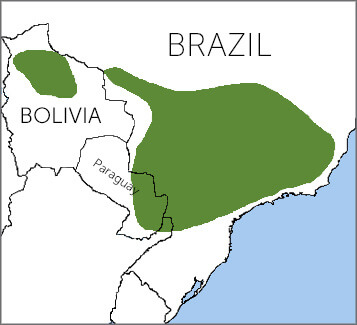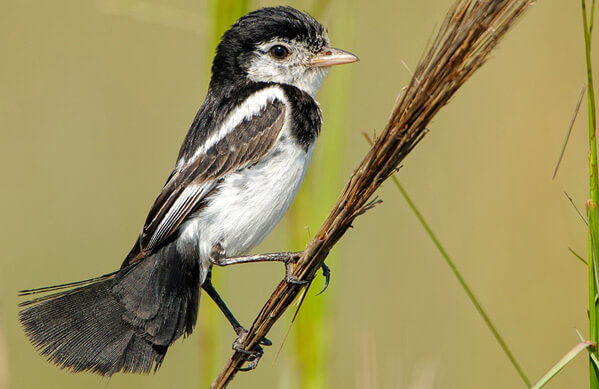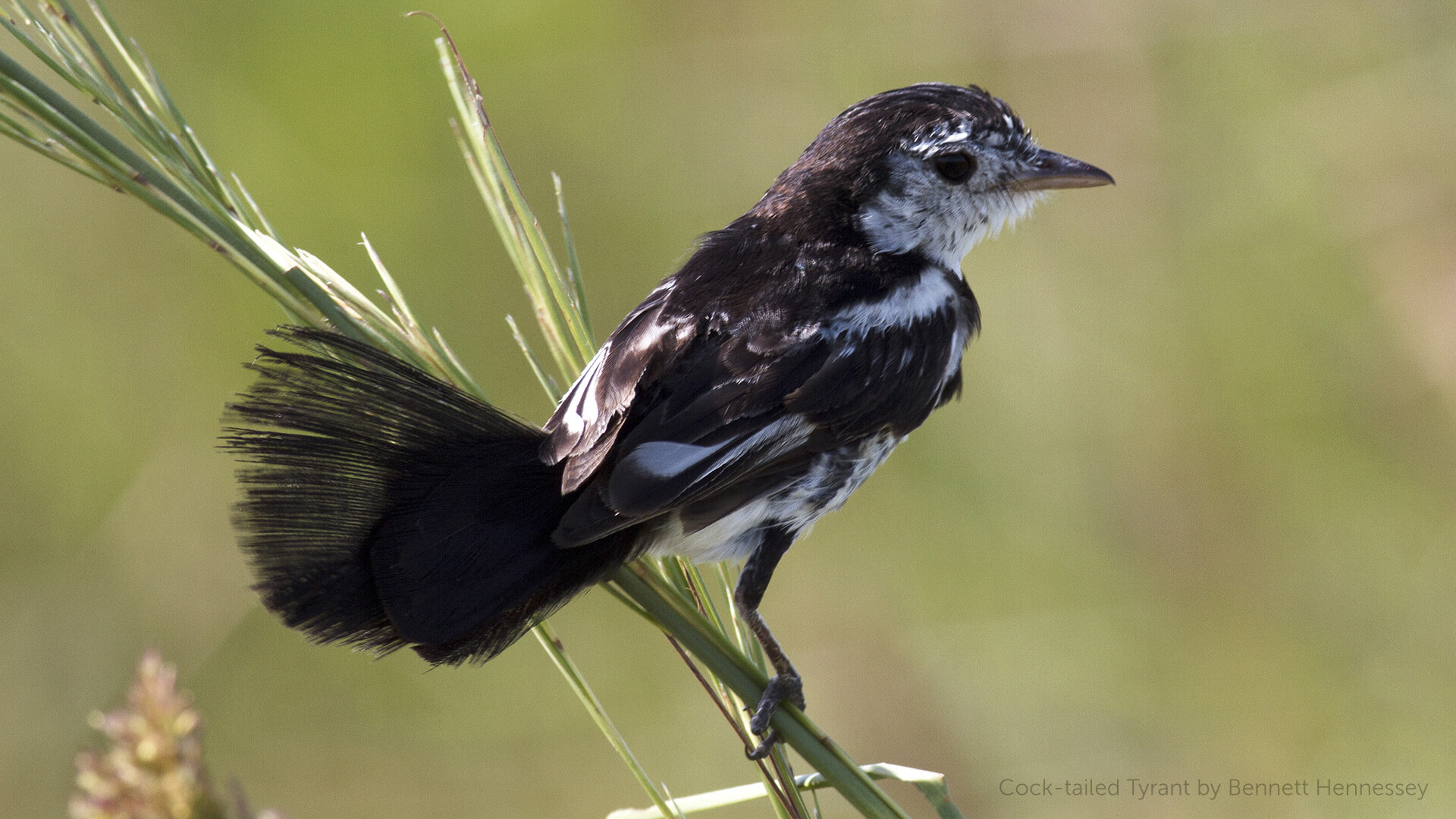 In Bolivia, local people call the Cock-tailed Tyrant "helicoptero" for its distinctive flight pattern, which resembles a slow hummingbird hover. A little bigger than a junco, these are eye-catching birds; males have bold black-and-white plumage and fan-like tails that give them a jaunty appearance.
In Bolivia, local people call the Cock-tailed Tyrant "helicoptero" for its distinctive flight pattern, which resembles a slow hummingbird hover. A little bigger than a junco, these are eye-catching birds; males have bold black-and-white plumage and fan-like tails that give them a jaunty appearance.
This bird's preferred habitat — tall grass savanna — can make the species tough to find. "You can walk for hours through chest-high grass but not find any Cock-tailed Tyrants, even when you are in the exact same spot where you saw a family group a week ago," says Bennett Hennessey, who leads the Brazil Conservation Program at ABC.
"Luckily, every five minutes or so, a bird will perch on the top of the tallest grass to oversee the area, and give itself away." The bird's habit of jerking its tail up and down while flicking its wings also makes it easier to spot.
Family of Tyrants
This distinctive bird is a member of the tyrant-flycatcher family, a large group of insect-eating birds of the Western Hemisphere named for their bold, curious, and sometimes aggressive habits. This family also includes Olive-sided Flycatcher, Santa Marta Bush-Tyrant, and Ochraceous Attila.
At home in the cerrados (wooded savannas) of Brazil and Paraguay, the species can also be found in the seasonally inundated grasslands of Bolivia, including at the Barba Azul Nature Reserve. Barba Azul was established by ABC and our partner Asociación Armonía in 2008 as a haven for the Blue-throated Macaw and other threatened birds, including Orinoco Goose and Streamer-tailed Tyrant. It's also an important stopover site for migratory birds such as Buff-breasted Sandpiper.

Female Cock-tailed Tyrant by Robert Langstroth
The Quiet One
The Cock-tailed Tyrant is a quiet flycatcher, unlike most of its noisy kin. Even displaying males are nearly silent, only uttering a soft "tic" note during their aerial displays. Although non-vocal, the male's acrobatic display is impressive — a fast-fluttering, wobbling flight with the tail held forward over its back, almost touching the bird's head.
This gregarious species is often found in good-sized groups, even forming loose breeding colonies. They time their nesting to coincide with the beginning of the rainy season.
Like most of its family, this tyrant-flycatcher feeds by hovering, gleaning, and sallying after insects, which the birds snatch off grass stems and shrubs or catch in midair. Females are also known to feed small fruits to fledglings.
Sign up for ABC's eNews to learn how you can help protect birds
Help for Bird Habitat
The biggest threat to Cock-tailed Tyrant is habitat loss. The species is highly dependent on undisturbed grasslands, which are becoming increasingly rare throughout its range as agriculture, livestock farming, introduced grasses, and mining gobble up land.
In Bolivia, ABC continues to work with Asociación Armonía at the Barba Azul reserve, where we've established additional infrastructure for reserve management, including a research station. ABC also helped Armonía buy a tractor to create firebreaks, a vital protection from fires. (For those interested in visiting the Barba Azul reserve for its excellent birding, please see Conservation Birding.)
Donate to support ABC's conservation mission!




















































